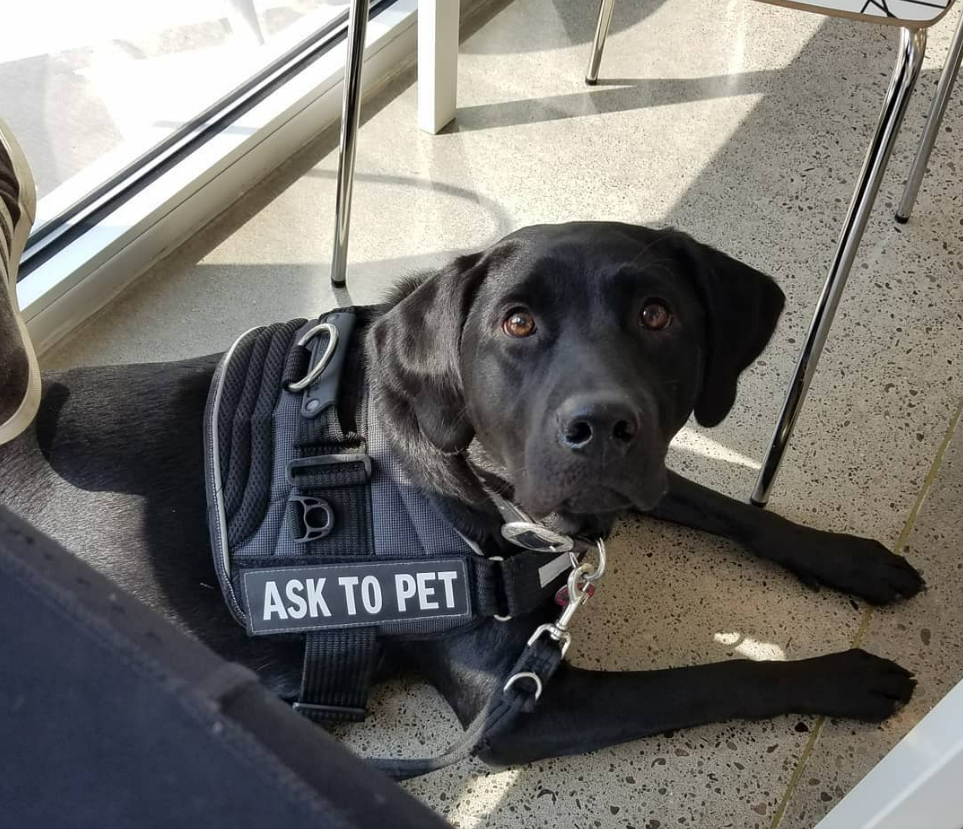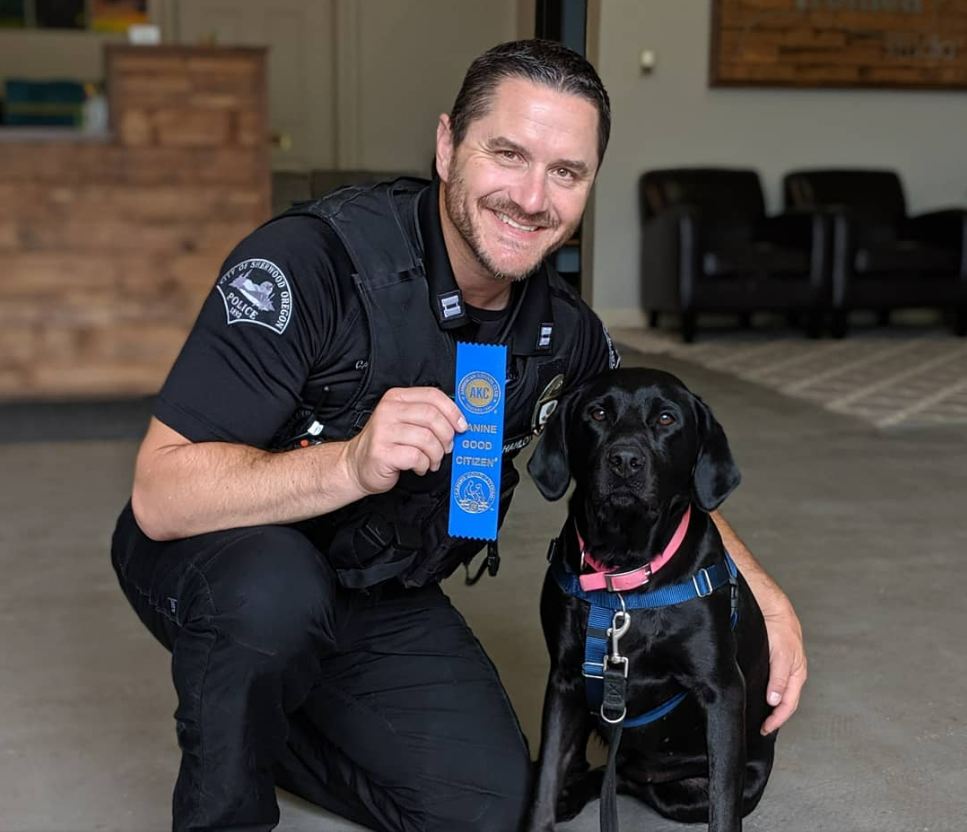Problem
Problematic Behavior Or Activity
Police officers are expected to respond to, deal with, and accept the worst society has to offer. They start every workday by putting on a ballistic vest, a gun, and a badge that represents, for some, the very best and for others, the very worst. Increasing demands are placed on police officers to solve problems that exist in their communities, and they continually must bear the weight of every negative police interaction across the country.
According to the National Alliance on Mental Illness, between 7-19% of police officers experience symptoms of Post-Traumatic Stress Disorder, compared to 3.5% of the general population. A 2018 study by the Ruderman Family Foundation found that when compared to other professions, police officers are among the highest risk for death by suicide. Information provided by Blue H.E.L.P., a nonprofit run by active and retired police officers, confirms this with the report that at least 138 police officers took their own lives in 2021, compared to 22 correctional officers, 18 fire fighters, and 4 EMS providers. Locally, the Sherwood Police Department is feeling the effects of numerous critical incidents since 2003.
In 2003, a beloved member of the department took his own life in a holding cell of the police department. The entire community felt the loss and it still today affects some members of the department.
On Christmas night in 2016, a gunman shot his estranged wife and then led Sherwood area officers on a short and dynamic manhunt. The manhunt culminated in a fierce gun battle with an Oregon State Police Trooper, which left the Trooper critically injured. Eventually, the gunman engaged police officers from around the area, including three from Sherwood. After the shooting stopped, officers successfully focused on saving the Trooper’s life. This incident had a significant impact on many, but specifically three Sherwood officers.
Then in October 2017, just ten months after the Christmas shooting, a 4-year-old boy was run over and killed in the parking lot of a Sherwood multi-family housing complex. Unique to this incident was that officers attempted life-saving efforts and the trauma of the victim’s death and his family’s grief all unfolded in the parking lot and was handled by the Sherwood first responders, one of whom was also involved in the Christmas shooting.
Impact On The Community
Decreased police effectiveness and efficiency and high psychological demands affect police officers’ performance, tolerance, and overall ability to police the community. When police officers are carrying an excessive psychological burden, they will not have the capacity to be the officers the community expects and needs. As the problem worsens, they may become unable to perform, which creates a fiscal impact by the loss of staffing. In the worst cases, the community may suffer the loss of the officer to stress-related claims, early retirement, early illness, or fatality, including suicide.
Solution
Program Description
The Comfort K-9 program includes the unique deployment of a specifically selected and trained therapy dog. The dog’s primary purpose is to address the psychological needs of officers and department members, as well as crime and trauma victims when appropriate. The goal of the program is to provide comfort and emotional support during and following traumatic events. The program requires dedication, including a large commitment of time, training, patience, and love, to be successful. Points of consideration include:
Identifying K9 job tasks
Securing the necessary funding for the dog and program (lifetime)
Picking the right dog for your program
Sleecting the right trainer, and training philosophy, for the department and dog
Tailoring the program to best fit the department and situation
Determining how the dog will be "managed" or handled (i.e., selecting one primary handler or multiple handlers)
Selecting the Care Team for the dog and program
Developing the necessary policies, procedures, and/or agreement forthe program
Based On Research
Several studies have assessed the psychological and physiological benefits of interacting with dogs (e.g., Allen et al., 1991, 2002; Lass-Hennemann et al., 2018; Odendaal & Meinties, 2003). Overwhelmingly, these studies have demonstrated petting dogs and other dog-centered therapeutic interventions have shown many positive effects, such as a reduction in cortisol levels, anxiety, depressive symptoms, stress, and an increase in endorphins, dopamine, and oxytocin (see, e.g., Hunt & Chizkov, 2014; Odendaal, 2000). It has even been associated with a reduction of anxiety associated with traumatic stressors related to PTSD (Lass-Hennemann et al., 2014, 2018; O’Haire & Rodriguez, 2018).
Funding
The costs for this type of program can vary. To get a dog similar to Mila can cost around $25,000 with boarding and training. The Sherwood Police Foundation, which is funded through donations, funds the Sherwood Police Department Comfort K-9. A local family donated Mila to the department. With these donations, the costs for this program have come to a total of $16,000 to date.
Outcome
Program Impact
Our program is still growing and developing, but we have already seen positive anecdotal results. Officers have self-reported positive impacts from Mila, our dog, and actively seek to spend time with her. For example, one of the officers interviewed a survivor of domestic violence and strangulation. The officer shared the following description of Mila’s interaction with the survivor during an interview:
“On Monday I responded to an assault call. After contacting the victim, I discovered that she had actually been strangled and she agreed to meet me at the police department for a face-to-face interview. As we conversed, I could see that the victim was periodically holding in her emotions. Certain questions and recollections would cause her voice to change, delay her responses, her eyes to look away and I could see her swallowing the lump in her throat. She was trying her best to remain even keel.
Then Mila entered the room.
Mila trotted into the room, bypassed me, and went straight over to my victim. Without any coaxing or commands, Mila up and plopped her head on my victim’s leg. I explained who Mila was and her purpose here with the Police Department. My victim disengaged from the conversation, leaned over, and was giving Mila scratches behind her ears. As I finished explaining why Mila was there and the comfort that she’s supposed to bring to people that have experienced incidents like hers, my victim sat back up and stated with tears in her eyes “It’s working.” It only took a few seconds of interaction for Mila to have a huge impact on my victim and her ability to get through the interview process. In the end, it made it easier to do my job as well.”
Critical Success Factors
We recommend departments seriously consider adding a Comfort K-9 to their Officer Wellness programs but take the time and do it right. We recommend departments hand select their dog and trainer and avoid those groups and/or people that pre-train and then ship a “trained” dog. It is critically important that the comfort dog be trained with positive, reward-based methods. 
When working with dogs taught to provide emotional support and comfort to humans they interact with daily, we believe it is imperative to use only positive reinforcement-based training methods and avoid aversive tools such as e-collars, prong or choke collars, sound correctors or physical correction. To provide consistency in training across the dog’s working career, it may be best to implement the program using one primary handler. This will help mitigate the dog developing habits that conflict with its strict training. Being in a community that loves dogs may also help implement the program successfully.
Lessons Learned
It is important to keep in mind that, aside from the cost, there may be some barriers to implementing a program like Comfort K9. For example, some officers may be allergic to dogs. In those departments, getting a hypoallergenic dog and/or not requiring the officer to utilize its services should be taken into consideration.
Related Research & Documents
Allen, K. M., Blascovich, J., and Mendes, W. B. (2002). Cardiovascular reactivity and the presence of pets, friends, and spouses: the truth about cats and dogs. Psychosom. Med. 64, 727–739.
Allen, K. M., Blascovich, J., Tomaka, J., and Kelsey, R. M. (1991). Presence of human friends and pet dogs as moderators of autonomic responses to stress in women. J. Pers. Soc. Psychol. 61, 582–589. doi: 10.1037/0022-3514.61.4.582
Blue H.E.L.P (n.d.). Retrieved from: https://bluehelp.org/
COPS Office (Office of Community Oriented Policing Services). (2018). Officer Health and Organizational Wellness: Emerging Issues and Recommendations [PDF file]. Officer Safety and Wellness Group Meeting Summary. Washington, DC: Office of Community Oriented Policing Services. Retrieved from: https://ric-zai-inc.com/Publications/cops-w0860-pub.pdf
Fiegl, A. (December 21, 2012). The healing power of dogs. National Geographic. Retrieved from: https://news.nationalgeographic.com/news/2012/12/121221-comfort-dogs-newtown-tragedy-animal-therapy
Heyman, M., Dill, J., & Douglas, R. (April 2018). The Ruderman white paper on mental health and suicide of first responders. Retrieved from: https://rudermanfoundation.org/white_papers/police-officers-and-firefighters-are-more-likely-to-die-by-suicide-than-in-line-of-duty/
Hunt, M. G., & Chizkov, R. R. (2014). Are therapy dogs like Xanax? Does animal-assisted therapy impact processes relevant to cognitive behavioral psychotherapy?. Anthrozoös, 27(3), 457-469.
Jetelina, K. K., Molsberry, R. J., Gonzalez, J. R., Beauchamp, A. M., & Hall, T. (2020). Prevalence of mental illness and mental health care use among police officers. JAMA network open, 3(10), e2019658-e2019658.
Lass-Hennemann, J., Peyk, P., Streb, M., Holz, E., and Michael, T. (2014). Presence of a dog reduces subjective but not physiological stress responses to an analog trauma. Front. Psychol. 5:1010. doi: 10.3389/fpsyg.2014.01010
Lass-Hennemann, J., Schäfer, S. K., Römer, S., Holz, E., Streb, M., & Michael, T. (2018). Therapy dogs as a crisis intervention after traumatic events?–An experimental study. Frontiers in Psychology, 9, 1-11. doi: 10.3389/fpsyg.2018.01627
LEOKA https://www.fbi.gov/services/cjis/ucr/leoka
Odendaal, J. S. (2000). Animal-assisted therapy - magic or medicine? J. Psychosom. Res. 49, 275–280. doi: 10.1016/S0022-3999(00)00183-5
Odendaal, J. S., and Meintjes, R. A. (2003). Neurophysiological correlates of affiliative behaviour between humans and dogs. Vet. J. 165, 296–301. doi: 10. 1016/S1090-0233(02)00237-X
O'Haire, M. E., and Rodriguez, K. E. (2018). Preliminary efficacy of service dogs as a complementary treatment for posttraumatic stress disorder in military members and veterans. J. Consult. Clin. Psychol. 86, 179–188. doi: 10.1037/ccp0000267
UCLA Health. (n.d.). Animal Assisted Therapy Research Findings. Retrieved from: https://www.uclahealth.org/pac/animal-assisted-therapy
Related Posts
https://www.facebook.com/milagrothecomfortk9/
https://katu.com/news/local/everyday-heroes-mila-the-comfort-k-9
https://pawsforresponders.com/milagro
https://www.comfortk9.com/
https://www.youtube.com/watch?v=7bLFiyZ0nlU